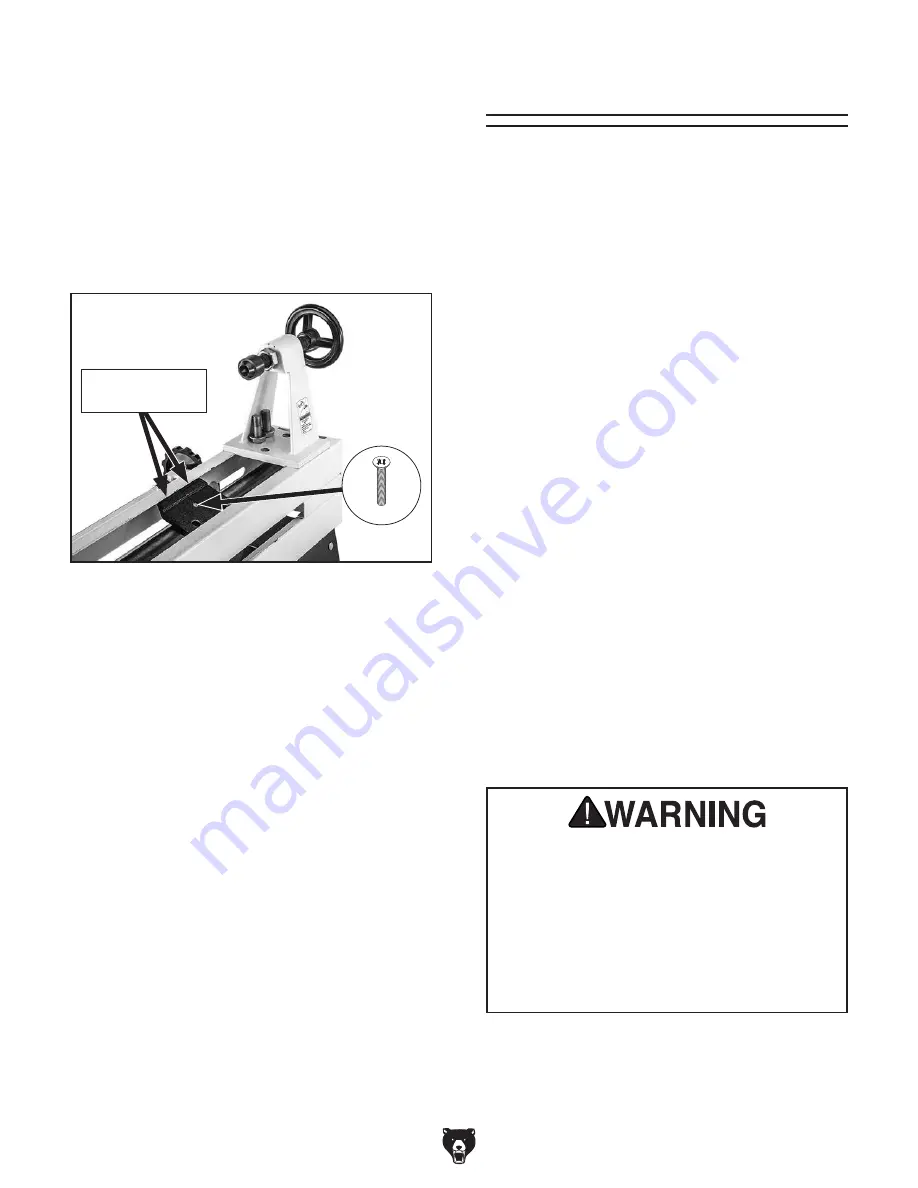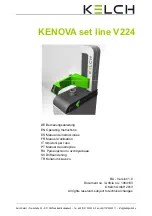
-28-
Model G0842 (Mfd. Since 04/18)
Removing Tailstock
Re-installing Tailstock
1. place clamping plate halves (figure 32)
under bedway in location where tailstock is
needed for desired operation, then secure
halves with (2) flat head screws.
2. re-install tailstock on clamping plate using
clamp bolts and flat washers from
Step 1 of
Removing Tailstock. Check to make sure
tailstock slides smoothly along bedway.
1. loosen tailstock clamp bolts shown in
figure 31 on Page 27, remove clamping
plate, clamp bolts, and flat washers from
tailstock, then move tailstock out of the way.
2. remove (2) flat head screws that secure
clamping plate halves together (see
figure
32), then remove plate halves and tailstock
from bed.
figure 32. Clamping plate halves.
x 2
Clamping plate
halves
Adjusting Tool Rest
the tool rest assembly consists of two compo-
nents: the tool rest base (or banjo) and the tool
rest. the tool rest base moves forward/backward
and left/right along the length of the lathe bed.
the tool rest rotates and moves up and down in
the tool rest base. locks for both components
allow you to secure the tool rest in position after
making these adjustments.
When adjusting the tool rest, position it as close
as possible to the workpiece without actually
touching it. this maximizes support where the
cutting occurs and minimizes leverage, reducing
the risk of injury if a "catch" occurs.
Many woodturners typically set the height of the
tool rest
1
⁄
8
" above or below the centerline of the
workpiece, depending on their height, the type
of tool they're using, and the type of operation
they're performing.
As a rule of thumb: For most (spindle) turning
operations, the cutting tool should contact the
workpiece slightly above centerline. For most
inside (bowl) turning operations, the cutting tool
should contact the workpiece slightly below
centerline.
Keeping all these factors in mind, your main goal
when adjusting the tool rest should be to provide
maximum support for the type of tool being used,
in a position that is safe and comfortable for you.
improperly supported or positioned cutting
tools can "catch" on workpiece, ejecting
tool from your hands with great force. To
reduce this risk, always ensure tool rest is
properly positioned for each type of opera-
tion, cutting tool is firmly supported against
tool rest bEfORE cutting, and cutting tool
is properly positioned to cut at the correct
angle for tool and operation type.
Summary of Contents for G0842
Page 56: ......





































